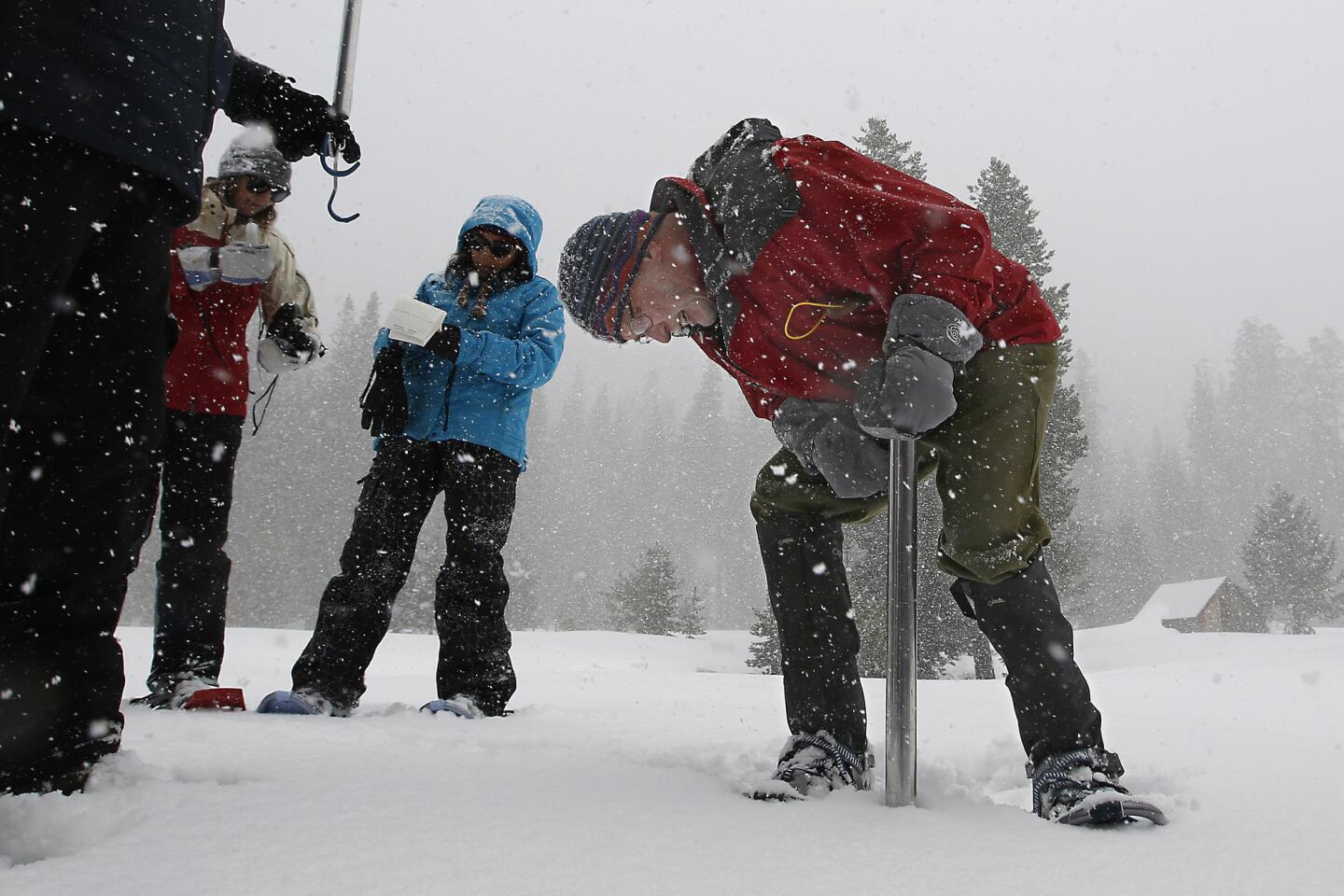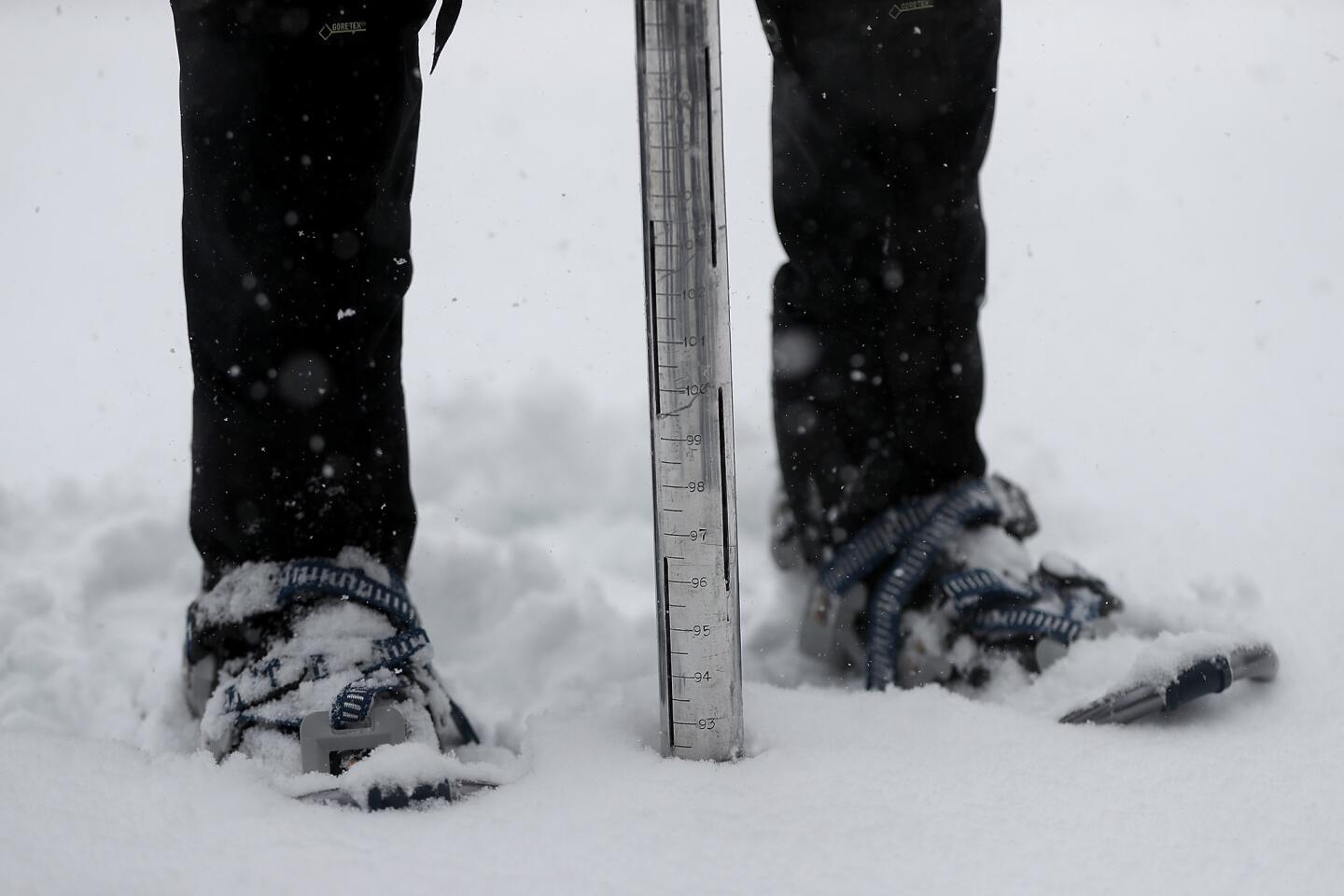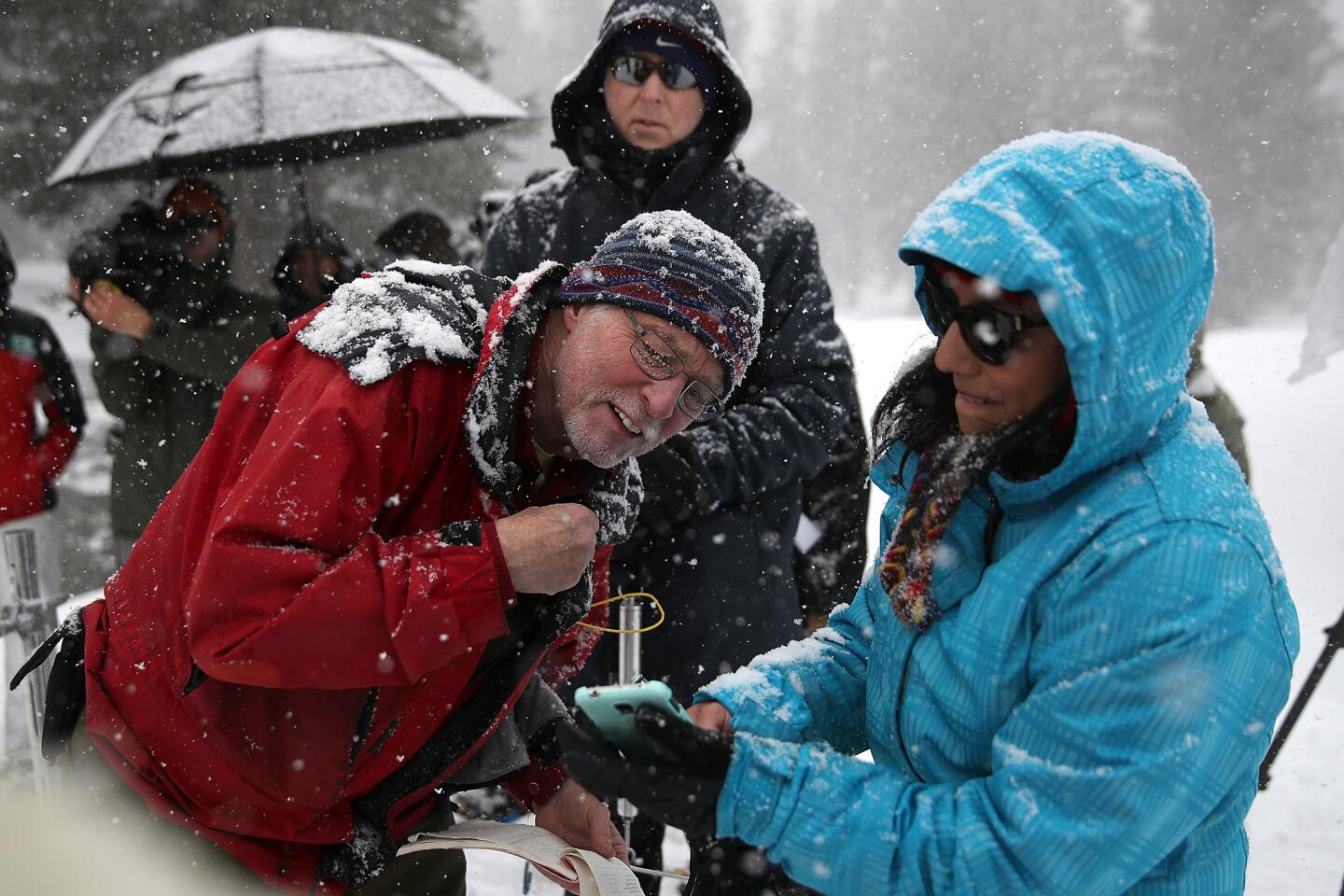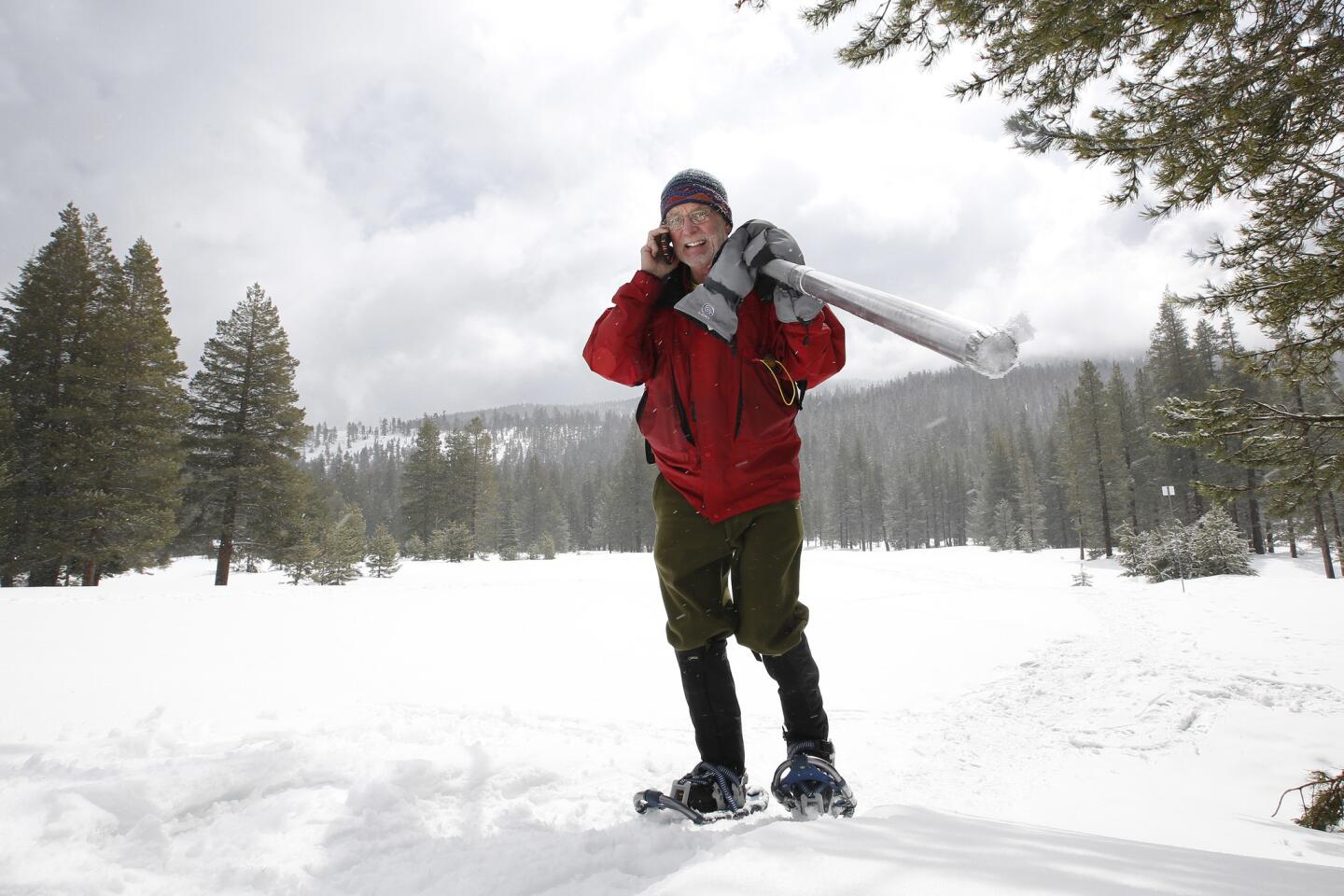California snowpack is one of the biggest ever recorded, and now poses a flooding risk

Snowmelt from the Sierra Nevada has brought beauty to the Owens Valley. (March 29, 2017) (Sign up for our free video newsletter here http://bit.ly/2n6VKPR)
- Share via
The skies were gray, snow was falling and it was bitterly cold when state snow survey chief Frank Gehrke made his monthly march out to a deep pillow of snow in the Sierra Nevada town of Phillips on Thursday morning.
He plodded across the white mounds, plunged his metallic pole into the powder beneath him, pulled it out and made his proclamation: 94 inches deep.
The 2016-17 winter created one of the largest snowpacks in California’s recorded history and it’s loaded with enough water to keep reservoirs and rivers swollen for months to come.
“For recreation, there’s a lot of pent-up demand for spring touring,” Gehrke told reporters and viewers watching on a social media live stream. “Clearly this is going to be a good year for it. People have to be aware that conditions are different and they can’t expect the same conditions they had a couple years ago.”
With reservoirs and rivers already full from months of rain, the addition of melting snow will likely push water over the banks in some communities and cause flooding, said David Rizzardo, chief of snow survey and water supply forecasting for the state Department of Water Resources.
Towns along the San Joaquin River, which is smaller than the roaring Sacramento River, are at greatest risk, he said.
“I would say this is one of those really special five exceptional years where every reservoir is full, every watershed is full and when it all comes down the more dire situation is in the Central and southern Sierra Nevada,” Rizzardo said.
This year’s snowpack is the seventh-deepest since 1950 and biggest since 2011, said state hydrologist Mike Anderson.
When Gehrke stood at that same spot in Phillips in 2015, it was a bare field of dirt, grass and weeds.
“The difference is visually stunning, but it’s the pattern of West Coast weather,” Gehrke said. “The winter weather in California is feast or famine. We have very dry years followed by extremely wet years.”
Traditionally considered the end of California’s rain season, the April 1 snowpack is the bar by which the success of each year’s winter is measured. The state takes manual measurements the first day of each month from January to May and because April 1 falls on a Saturday this year, the Department of Water Resources measured it two days early.
As of Thursday, the snowpack across the entire Sierra was at 164% of average for this time of year. The northern region was at 147%, the central was at 175% and the southern was 164% of average, respectively, state data showed.
When that spot was a dusty patch of land for Gehrke two years ago, he was filmed by a phalanx of cameras and joined by Gov. Jerry Brown, who argued that the absence of snow was emblematic of the state’s punishing drought and that water users needed to prepare for sacrifices.
The governor declared a state of emergency and instituted strict water use restrictions that remain in place for some people today.
But with all of that snow piled in the Sierra this year — it equates to more than 46 inches of rain when it melts — many water agencies up and down the state argue that it’s time to declare the drought over and lift those restrictions. California has been inundated with more than 30 atmospheric river events — warm, Pacific-based storms that drop massive amounts of rain — since October and is on track for one of its rainiest water years (measured from Oct. 1 — Sept. 30) in history.
“While the emergency has ended, the need to conserve has not,” Metropolitan Water District General Manager Jeffrey Kightlinger said in February, when the state chose to temporarily continue the restrictions. “Southern Californians have learned a lot about water conservation during the latest drought. We cannot afford to forget those lessons.”
The state will revisit the issue in May, when the state Water Resources Control Board may consider keeping local water agency reporting requirements but might lift other restrictions in place.
In the meantime, cities and utility companies are preparing for what could be a paradoxically fruitful and disastrous spring and summer when all that snow begins to melt.
Farmers in some parts of the Central Valley will get water allocations the likes of which they haven’t received in years. But in Los Angeles, Mayor Eric Garcetti declared an emergency last week citing concerns the melting snowpack could flood homes and highways in the Owens Valley and damage the Los Angeles Aqueduct.
The proclamation is designed to help the Los Angeles Department of Water and Power protect its infrastructure.
For breaking California news, follow @JosephSerna on Twitter.
ALSO
Why record snow followed by warm temperatures is a dangerous combination for Owens Valley
UPDATES:
2:35 p.m.: This article was updated with details on the snowpack’s historical ranking.
This article was originally published at 1:25 p.m.
More to Read
Sign up for Essential California
The most important California stories and recommendations in your inbox every morning.
You may occasionally receive promotional content from the Los Angeles Times.

















